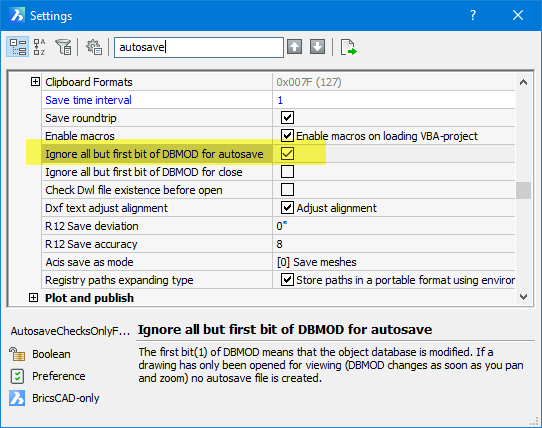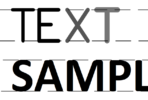Almost 14 years ago, we published “The Autosave Mystery” to help clarify how the autosave functionality in AutoCAD works, what it does, when it does it, etc.
We have since learned that the autosave functionality in BricsCAD is different enough to warrant it’s own post.
So, what is autosave and how does it work? First off, let’s discuss two system variables. The first is named SAVETIME, which is the interval at which the autosave feature will “fire”. The other is SAVEFILEPATH, which is the location where your recovery data will be saved. In BricsCAD, the default for SAVETIME is 60, and the default for SAVEFILEPATH is the Windows temp folder (or %temp%)
Now let’s say you open a .dwg file and start working on it. Sixty minutes later, if you have not otherwise manually saved the drawing, the autosave function will “fire” and save a copy of the drawing with a .sv$ file extension, into the folder specified by SAVEFILEPATH.
Let’s say you keep working along (without saving). At the two hour mark, the autosave feature will fire again and the .sv$ file be renamed to .bak, and a new .sv$ file will be created. This sequence of events will continue except that only one .bak file will exist. Subsequent autosaves will delete the current .bak, rename the .sv$ to .bak, and create a new .sv$ file.
If you manually save your drawing, then the timer is reset. So if you are working along and run QSAVE at the 15 minute mark, the next autosave will not fire in 45 more minutes, the timer is reset and it will be another 60 minutes. As you’ve probably figured out, if you run QSAVE more often than the value of SAVETIME, then the autosave feature will never “fire” at all.
All of this is pretty much how AutoCAD works, so here are the differences. AutoCAD no longer creates .bak files starting with the 2018 version. Only .sv$ files are created and those are deleted if you shutdown AutoCAD correctly (that is to say, if there was no crash). In BricsCAD, the .sv$ files and the .bak files that correspond to them are retained until you delete them. This should please many AutoCAD users who have moved to BricsCAD because this was a frequent wish.
Secondly, in AutoCAD, the timer to countdown to the next autosave starts when DBMOD is changed from 0 (zero). DBMOD is a read-only system variable that can be evaluated to see if a drawing has been changed since the last save. If this variable = 0, then there is no reason to fire off an autosave since the drawing has been saved and no changes have been made.
In AutoCAD and BricsCAD, even a change in view will alter DBMOD from the 0 state. So if you simply pan or zoom a drawing, DBMOD is no longer equal to zero, and the timer starts.
However in BricsCAD, there is an option to tell BricsCAD to ignore minor changes such as pan and zoom operations. You can find this in Options (search for autosave). The name of this variable is “AUTOSAVECHECKSONLYFIRSTBITDBMOD” and the default is 1 which essentially means you have to draw, erase or otherwise make changes to the drawing database in order to start the autosave timer.

Have you ever had to rely on an autosave file because your work was lost?





The last question should be: “How often have you crashed because Autodesk stole your subscription money for AutoCAD and spent it on cloud and construction management platforms (which you don’t use or have any need for) instead of spending the money on desktop AutoCAD which could have been used to make you less reliant on an autosave file because your work was lost?”
You can force the AutoCad Autosave files to be retained by denying the System the right to delete files in the SAVEFILEPATH folder. Since AutoCad can’t overwrite the file
It creates a .Bak file.